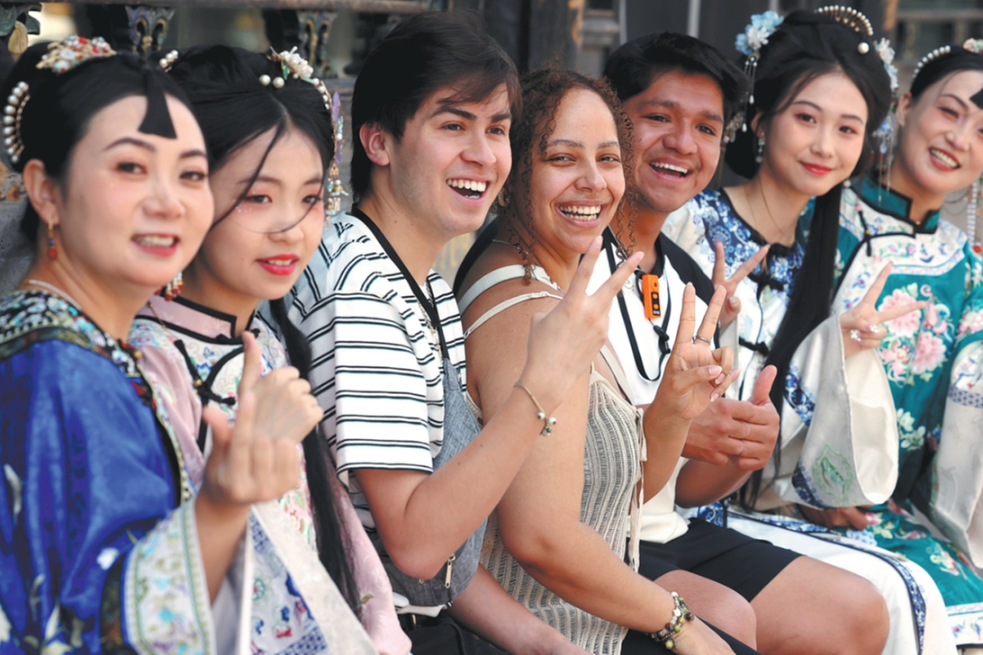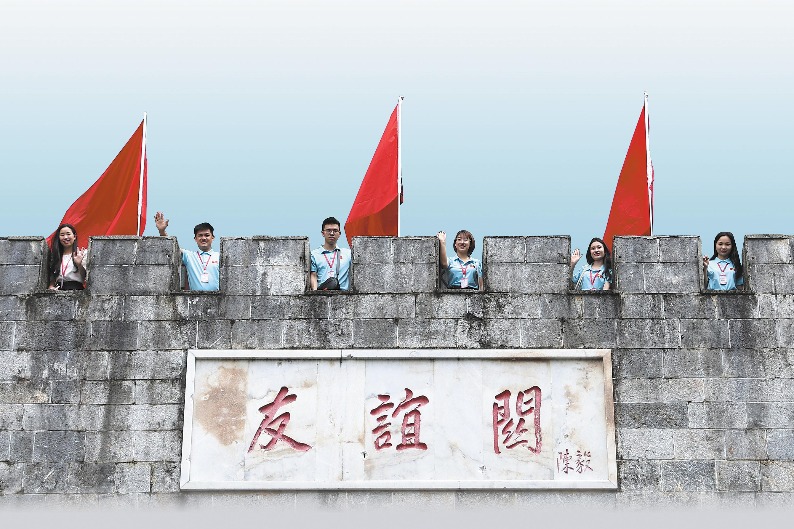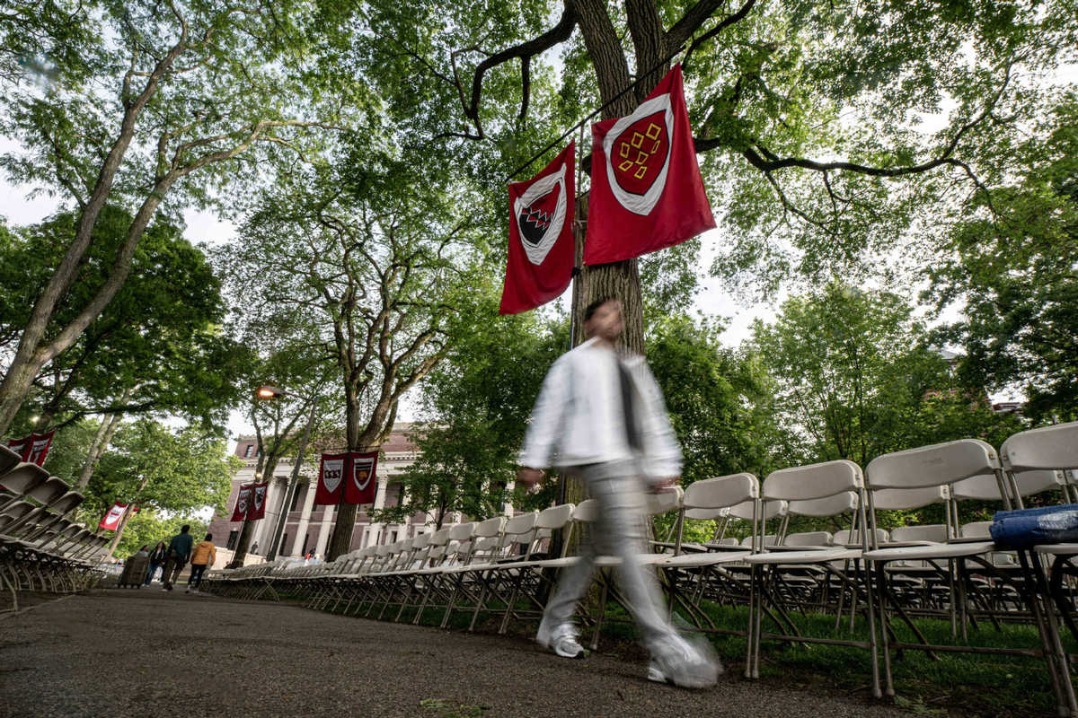Community gives insight into lives of working class
For decades, Shanghai neighborhood serves as window for foreign guests in learning about China

When construction began on Caoyang New Village in Shanghai's Putuo district back in 1951, few would have envisaged the community would become so emblematic of China's vision for improving the living conditions of its industrial workers.
The leafy surroundings of Caoyang, with its three-story, red-roofed buildings interspersed by French plane trees, was the first residential compound built entirely for industrial workers after the founding of the People's Republic of China in 1949.
Opening on International Workers' Day in 1952, the complex provided 1,004 homes for industrial workers and their families complete with running water, electricity and sanitation facilities — which were relatively rare at that time.
In contrast, many industrial workers at that time lived in cramped and unsanitary conditions.
The name Caoyang was inspired by the Chinese for "rising sun", and an aspiration that things will only get better for the community and China's workers in general.
Over the years, the name has proved true and more so, with the community not only becoming a symbol of China's desire to improve the lives of its people but also a beacon of understanding between China and the wider world.
"As a paradigm for showing the living conditions of workers in New China, Caoyang Yi Cun (Caoyang No 1 village) began receiving foreign dignitaries and friends in 1953, showing them the development of our country, including the improvement of the lives of residents, especially the working class," said Zhang Lei, deputy director of the administration of Caoyang Xincun subdistrict.
"Over the decades, nearly 400,000 visitors from more than 150 countries and regions have visited the Caoyang neighborhood of a little more than 2 square kilometers, including some who went to residents' homes to have a real personal experience of the happy life of an ordinary citizen in Caoyang," she said.
With Caoyang Yi Cun as the center of Caoyang New Village, eight other neighborhoods named Caoyang No 2 to No 9 villages were built in the following years.
On July 13, more than 40 international students in summer school programs at Shanghai International Studies University became one of the latest groups to experience life as a Caoyang resident for a day.
The activity first came into being in the early 1980s as the country adopted its reform and opening-up policy and the number of overseas tourists grew.
The students experienced shuttlecock kicking and hopscotch, games that children and adults in the local alleys play. They also visited the local museums and shops to get a taste of what life was like in the community in the past as well as today.
"Those residential buildings built more than seven decades ago still look graceful and awesome today. After visiting the neighborhood, it helped me better understand why the country has been developing rapidly. The people are diligent and the government is forward-looking," said Niyayesh Mehralipour, a 22-year-old university student from Iran who had been in Shanghai for only a week.
"I visited the 632-meter-tall Shanghai Tower, the world's second-tallest skyscraper, with one of the fastest lifts on the planet days ago. That allowed me to see how modern the city is. While the visit to Caoyang today is like witnessing a condensed history of the development of Chinese workers' residences, which is also very interesting to me," she said.
At a community activity center, the students experienced making Chinese dumplings, or jiaozi, after watching a demonstration by local residents. Ramon Parellada Martin, from Valencia Spain, forgot that the dumpling he'd made needed to be cooked first before eating it. Cries rang out as he put the raw dumpling into his mouth.
Parellada, 19, on his first trip to China, expressed his appreciation for having the opportunity to walk around a residential compound with such historical significance.
"I enjoy the natural beauty in this apartment complex with greenery and a curved waterway. It's a combination of both international and Chinese aesthetics," said Parellada, who attends university in Madrid.
"Shanghai is such an international city. Before I embarked on the trip, I wasn't sure how life was going to be for me when watching documentaries and videos about the city on YouTube. But I've already gotten used to it," he said.
Zhang, from Caoyang Xincun subdistrict, said even back in the early years expat visitors showed the same enthusiasm as they do today.
"It (the community) is a window to demonstrate the achievements of socialist construction, and how the real life of workers in Shanghai was getting on," she said.
The residents of Caoyang New Village have always been passionate and welcoming to foreign guests and eager to share their lives with them.
Zhang said that "living as a Caoyang resident for a day" has been listed as one of 14 special activities by China's national tourism administration, which later became part of the Ministry of Culture and Tourism.
Those invited to the model community can experience different activities according to their backgrounds, Zhang said, adding that have the opportunity to spend half a day to a day with a local family, learn how to make local food, speak some phrases in the Shanghai dialect and write Chinese calligraphy.
In early July, a group of 20 schoolteachers from Shanghai's sister cities in 15 countries took part in a tour. They went to a local primary school to communicate with teachers and interact with the students.
"If visitors are interested in art, they will have the opportunity to watch performances by local amateurs. If they are interested in traditional Chinese culture, they can make Chinese knots as souvenirs and try on Peking Opera costumes at the community activity center," Zhang said.
Zhou Kangle, a resident in Caoyang for decades, started receiving visitors to his home in 2002. He and his wife like to treat their foreign friends to delicious local homemade food.
He also likes showing them his collectibles such as a Yao Ming jersey from when he played on the Houston Rockets basketball team in the NBA, wooden wind chimes from Canada and dolls from Japan.
"Once my granddaughter and I received an elderly couple from the United States. Several years later, when my granddaughter went to the US for further studies, they drove three hours to pick her up at the airport and invited her to stay at their home for several days," he said.






Today's Top News
- US intervention escalates Israel-Iran conflict
- Balancing farmland protection, development
- China condemns US bombing of nuclear facilities, calls for peace and stability
- China's development aligns with human future
- Heavy rainfall affects over 400,000 in Hunan province
- 5 cities rise as intl centers for consumption






























